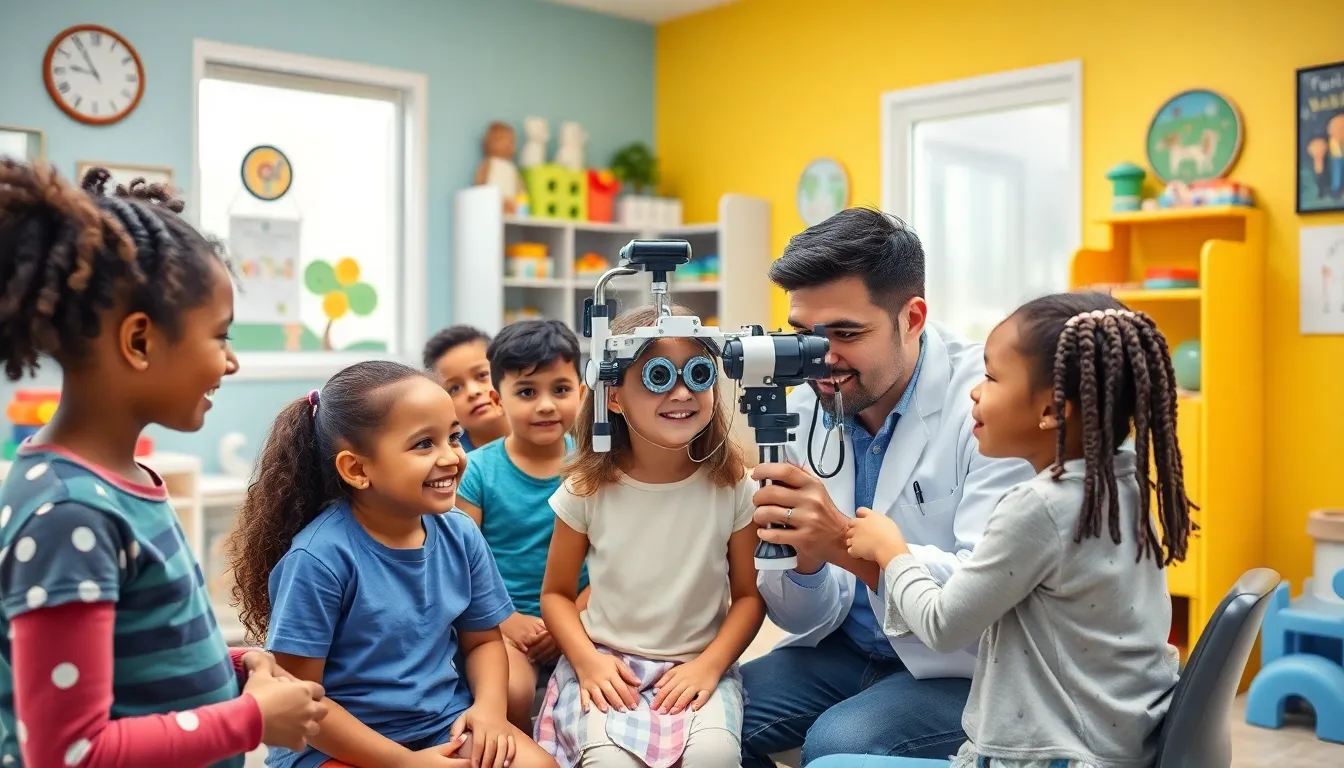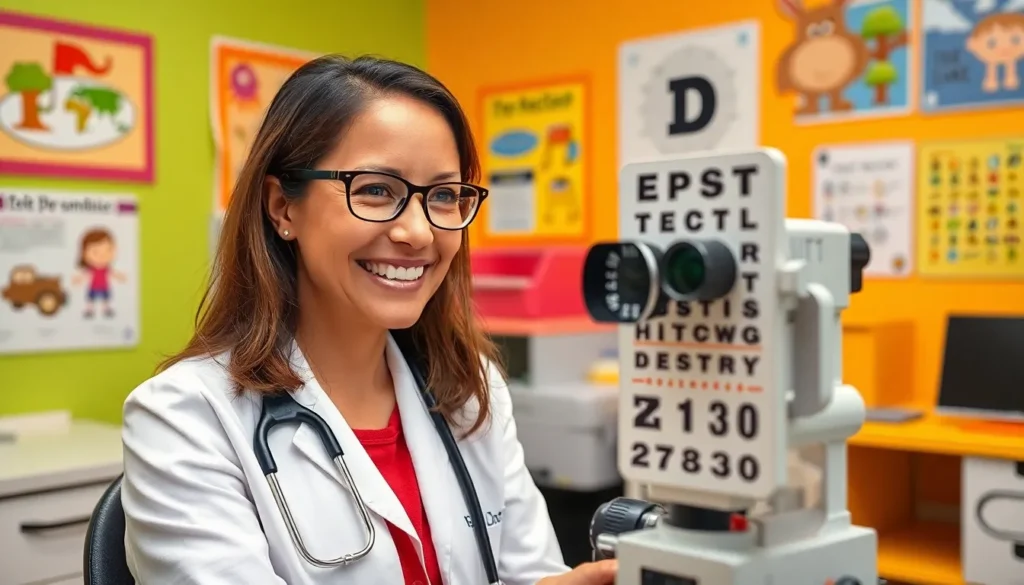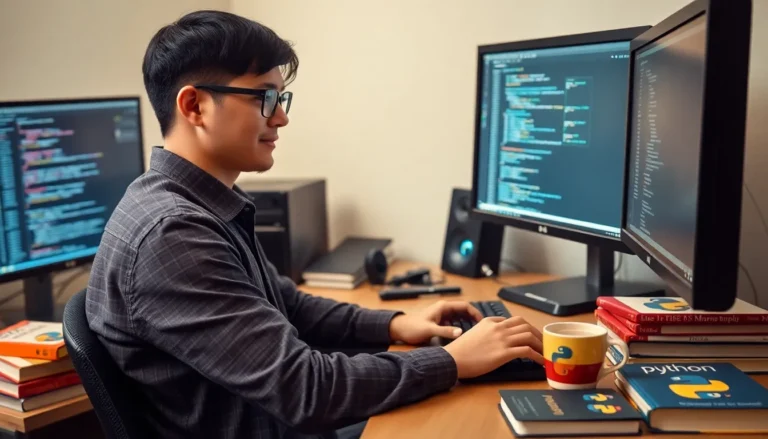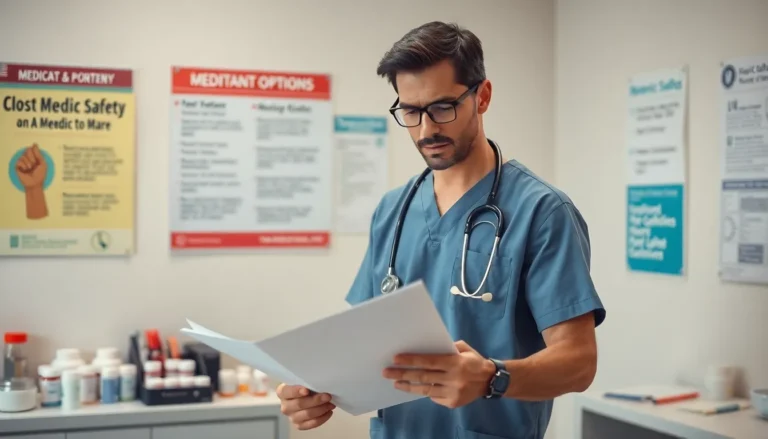Finding the right children’s eye doctor is crucial for ensuring your child’s vision develops properly. With so many options available, it can feel overwhelming to choose the best one nearby. A qualified pediatric eye care specialist not only provides essential eye exams but also understands the unique needs of growing children.
Parents want peace of mind knowing their little ones are in good hands. Regular eye check-ups can catch potential issues early, preventing long-term problems and supporting academic success. This guide will help parents navigate the search for a trusted children’s eye doctor close to home, making it easier to prioritize their child’s eye health.
Table of Contents
ToggleImportance Of Regular Eye Check-Ups For Children
Regular eye check-ups play a crucial role in maintaining children’s eye health. Comprehensive examinations help uncover vision problems early, ensuring timely intervention and support for optimal development.
Impact On Learning And Development
Vision significantly influences a child’s learning and development. Difficulties in seeing can lead to challenges in school and hinder academic performance. A child’s ability to read, write, and engage in classroom activities depends on clear vision. Children with uncorrected vision problems may struggle with comprehending lessons and completing assignments, affecting overall learning. Regular eye exams can identify these issues early, preventing future learning difficulties and promoting academic success.
Common Vision Problems In Children
Several common vision problems affect children, which regular exams can help detect.
- Amblyopia (Lazy Eye): A condition where one eye does not develop proper vision, leading to reliance on the other eye.
- Strabismus (Crossed Eyes): An imbalance in the eye muscles causing misalignment, resulting in double vision or poor depth perception.
- Refractive Errors: Includes myopia (nearsightedness), hyperopia (farsightedness), and astigmatism, all of which affect visual clarity.
- Convergence Insufficiency: Difficulty in coordinating both eyes to focus on near tasks, impacting reading and close work.
Early detection through routine eye exams can lead to effective treatment, aiding kids in overcoming these challenges.
Finding A Children’s Eye Doctor Near Me

Locating a qualified children’s eye doctor nearby is essential for maintaining optimal eye health in kids. Parents can follow specific strategies to simplify the search and ensure they choose the right specialist.
Tips For Locating A Specialist
- Ask for Referrals: Parents can consult their pediatrician for recommendations. Pediatricians often work closely with eye specialists and can provide reliable referrals.
- Utilize Online Directories: Websites like the American Academy of Pediatrics and the American Optometric Association offer search tools for finding local pediatric eye care specialists.
- Check Reviews and Ratings: Reading online reviews can offer insights into other parents’ experiences. Websites like Healthgrades or Yelp list patient feedback and ratings for eye doctors.
- Consider Insurance Networks: Parents should verify which specialists are covered under their insurance plans to minimize out-of-pocket expenses.
- Contact Local Health Departments: Local health departments can provide information on available pediatric eye care specialists in the community.
Factors To Consider When Choosing A Doctor
- Qualifications and Experience: Confirm the doctor’s credentials. Look for board certification in pediatric ophthalmology or optometry, with additional experience in children’s eye care.
- Office Environment: Evaluate the atmosphere of the clinic. A welcoming, child-friendly environment helps reduce anxiety and promotes a positive experience for children.
- Communication Style: Observe how the doctor interacts with the child. A patient and engaging approach fosters trust and encourages children to express their concerns about vision.
- Diagnostic Technology: Inquire about the technology used for eye exams. Advanced equipment can enhance the accuracy of diagnoses and improve treatment effectiveness.
- Accessibility and Location: Consider the doctor’s location and office hours. A convenient location and flexible scheduling can facilitate regular visits and comprehensive care.
What To Expect During An Eye Exam
Children’s eye exams involve several procedures and tests to assess vision and eye health. Familiarizing parents with these steps can reduce anxiety and help them prepare their child effectively.
Procedures And Tests For Children
- Visual Acuity Test: This test measures how well a child can see at various distances using an eye chart.
- Refraction Assessment: This test determines the child’s need for glasses or contacts by evaluating how light bends through the eye.
- Binocular Vision Evaluation: This assessment checks how well the eyes work together, essential for depth perception.
- Depth Perception Test: This test measures a child’s ability to judge distances accurately.
- Eye Health Examination: The optometrist examines the external and internal structures of the eyes for signs of health issues.
- Color Vision Test: This test identifies any deficiencies in color perception.
- Pupil Response Test: This evaluates how the pupils react to light, providing insights into the nervous system and eye function.
How To Prepare Your Child For The Visit
- Discuss the Exam: Explain the eye exam process in simple terms to reduce fear and uncertainty.
- Avoid Stressful Situations: Schedule the appointment at a time when the child feels relaxed and alert.
- Bring Necessary Items: Collect any previous glasses or medical records for the doctor to review during the exam.
- Reinforce Positive Experiences: Praise the child for being brave and cooperative during past medical visits to encourage a positive mindset.
- Practice Eye Tests: Familiarize the child with eye chart letters or symbols at home to ease anxiety about unfamiliar visual tasks.
Insurance And Cost Considerations
Understanding insurance coverage and associated costs is essential for parents seeking a children’s eye doctor. Familiarity with these aspects can make the process smoother and more affordable.
Coverage For Pediatric Eye Care
Most insurance plans cover pediatric eye care, including routine eye exams and necessary treatments. Benefits typically include coverage for glasses or contact lenses when prescribed. It’s crucial for parents to review their specific insurance policies, as coverage may vary. Parents can also reach out to their insurance providers to verify which local eye care specialists participate in their network, ensuring they receive the maximum benefits available.
Average Costs Of Eye Exams And Treatments
The average cost of a children’s eye exam ranges from $50 to $150, depending on the provider and location. Additional costs may arise from diagnostic tests or specialized treatments if needed. Treatment expenses for common vision conditions like amblyopia or strabismus can vary widely, often from $100 to several thousand dollars, depending on the complexity. Parents should inquire about payment plans or financial assistance offered by clinics to help manage these costs.
Finding a qualified children’s eye doctor is essential for ensuring optimal vision health in kids. By prioritizing regular eye exams parents can catch potential issues early and support their child’s academic and developmental success. Utilizing the right strategies to locate a trusted specialist can make a significant difference in a child’s eye care journey.
With the right approach and preparation parents can help create a positive experience for their children during eye exams. Investing in their child’s vision health today can lead to brighter futures and improved learning outcomes. Taking these steps ensures that children receive the best possible care for their eyes.



